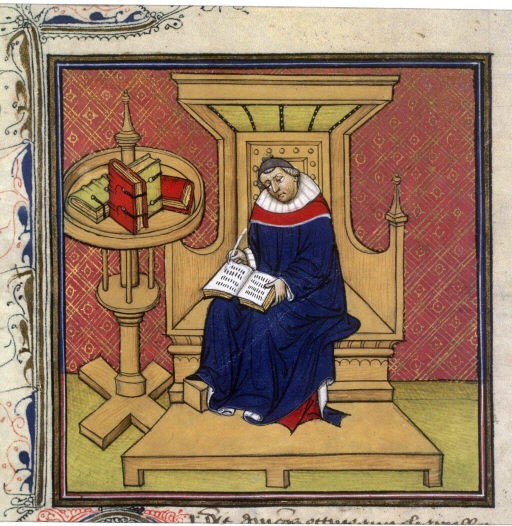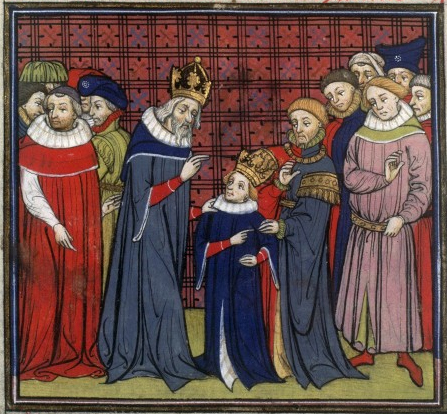Einhard (less correctly Eginhard), historian, born c. 770 in the district watered by the River Main in the eastern part of the Frankish Empire; d. March 14, 840, at Seligenstadt. His earliest training he received at the monastery of Fulda, where he showed such unusual mental powers that Abbot Baugulf sent him to the court of Charlemagne. His education was completed at the Palace School, where he was fortunate enough to count among his masters the great Alcuin, who bears witness to his remarkable talent in mathematics and architecture, and also to the fact that, in spite of his unattractive person, he was among the emperor’s most trusted advisers. Charlemagne gave Einhard charge of his great public buildings, e.g. the construction of the Aachen cathedral and the palaces of Aachen and Ingelheim, for which reason he was known in court circles as Beseleel, after the builder of the tabernacle (Ex., xxi). Charlemagne also availed himself of Einhard’s tact and prudence to send him on various diplomatic missions. Thus, in 802 he placed in his hands the negotiations for the exchange of distinguished Saxon hostages, and in 806 he was dispatched to Rome to obtain papal approbation for the partition of the empire, which the emperor had just decided upon.
 During the reign of Louis the Pious he retained his position of trust, and proved a faithful counsellor to Louis’s son, Lothair. Unsuccessful, however, in his attempts to settle the contests for the crown which had been stirred up by Empress Judith, and unable to bring about a lasting reconciliation between Louis and his sons, Einhard, in 830, withdrew to Mühlheim (Mulinheim) on the Main, which he had been granted as early as 815, together with other estates, as a mark of imperial favor. He transferred thither the relics of Sts. Marcellinus and Peter, and called the place Seligenstadt. Moreover, between 831 and 834 he established here a Benedictine abbey, where, after the death of his wife, Emma (or Imma), sister of Bishop Bernhar of Worms (not daughter of Charlemagne), he spent the rest of his life as abbot. It is not certain whether he was ordained priest. His epitaph was written by Rabanus Maurus.
During the reign of Louis the Pious he retained his position of trust, and proved a faithful counsellor to Louis’s son, Lothair. Unsuccessful, however, in his attempts to settle the contests for the crown which had been stirred up by Empress Judith, and unable to bring about a lasting reconciliation between Louis and his sons, Einhard, in 830, withdrew to Mühlheim (Mulinheim) on the Main, which he had been granted as early as 815, together with other estates, as a mark of imperial favor. He transferred thither the relics of Sts. Marcellinus and Peter, and called the place Seligenstadt. Moreover, between 831 and 834 he established here a Benedictine abbey, where, after the death of his wife, Emma (or Imma), sister of Bishop Bernhar of Worms (not daughter of Charlemagne), he spent the rest of his life as abbot. It is not certain whether he was ordained priest. His epitaph was written by Rabanus Maurus.
The most important of Einhard’s works is the “Vita Caroli Magni” (in “Mon. Germ. Hist.: Script”, II; printed separately, 4th ed., Hanover, 1880; also in Jaffé, “Bibliotheca rerum germanicarum”, IV; Germ. tr. by Abel, 3rd ed., Berlin, 1893, in “Geschichtsschreiber der deutschen Vorzeit”). This, the best biography of the whole period of the Middle Ages, written in close imitation of Suetonius, particularly his “Vita Augusti”, shows the emperor from the standpoint of the most intimate personal acquaintance with all sides of his character, and with a genuine attempt at truth of portrayal. The diction is in general elegant, though not polished. The annals of the Carlovingian Empire, which have been handed down as Einhard’s (ed. Kurze, 1895), are, in their present form, older materials worked over. Those for the years between 796 and 820 may date back to Einhard. In addition, we have from his hand the “Translatio et Miracula SS. Marcellini et Petri” (Mon. Germ. Hist.: Script., XV), containing data which are important for the history of culture. The seventy-one letters, written by Einhard between 825 and 830 (ed. Jaffe, “Bibliotheca”, Berlin, 1867, IV) in a clear, simple style, constitute an important source for the history of Louis the Pious. A collective edition of Einhard’s works was published by Teulet (Paris, 1840-43), with French translation.
PATRICIUS SCHLAGER (Catholic Encyclopedia)










